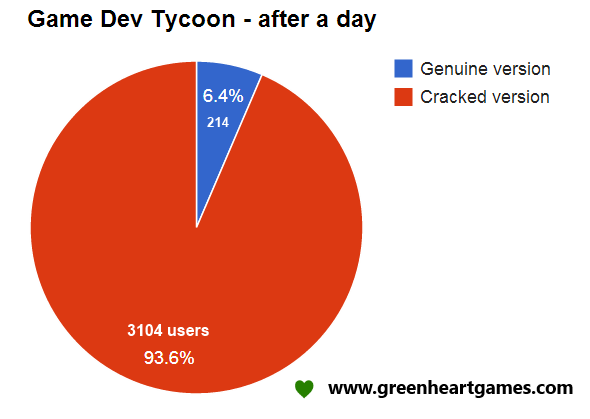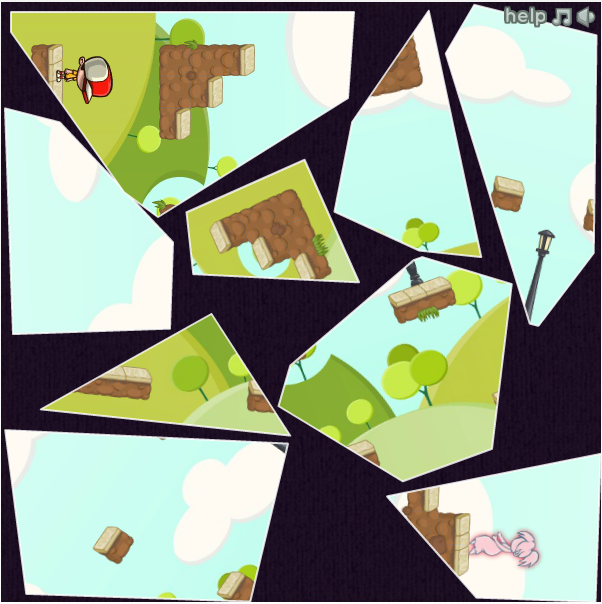When we released our very first game, Game Dev Tycoon (for Mac, Windows and Linux) yesterday, we did something unusual and as far as I know unique. We released a cracked version of the game ourselves, minutes after opening our Store.
I uploaded the torrent to the number one torrent sharing site, gave it a description imitating the scene and asked a few friends to help seed it.
Fascinating story about what a game dev learned through intentional piracy of their product, notable at least for this chart:

Over 93.6% of players stole the game. We know this because our game contains some code to send anonymous-usage data to our server.
Rather unfortunately, piracy appears to be a problem with indies just as much as with big-name publishers. And these guys even did the right thing and released the game without DRM. If you wonder why game publishers refuse to abandon DRM as a concept, look no further.
This is also why games are moving towards always-connected and pay-to-play; it avoids this problem altogether. If you don’t like that trend (and you shouldn’t), buy the games you play. Support developers.
